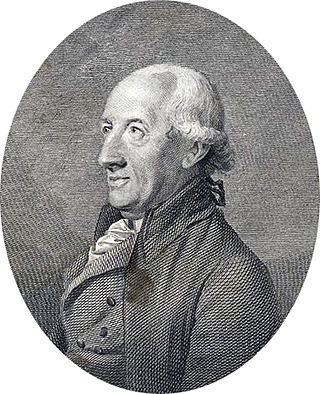Related Research Articles

A shamrock is a young sprig, used as a symbol of Ireland. Saint Patrick, Ireland's patron saint, is said to have used it as a metaphor for the Christian Holy Trinity. The name shamrock comes from Irish seamróg, which is the diminutive of the Irish word seamair and simply means "young clover".

William Cullen FRS FRSE FRCPE FPSG was a Scottish physician, chemist and agriculturalist, and professor at the Edinburgh Medical School. Cullen was a central figure in the Scottish Enlightenment: He was David Hume's physician, and was friends with Joseph Black, Henry Home, Adam Ferguson, John Millar, and Adam Smith, among others.
The year 1728 in science and technology involved some significant events.
The year 1676 in science and technology involved some significant events.

Johann Jacob Dillen Dillenius was a German botanist. He is known for his Hortus Elthamensis on the rare plants around Eltham, London, and for his Historia muscorum, a natural history of lower plants including mosses, liverworts, hornworts, lycopods, algae, lichens and fungi.

John Berkenhout was an English physician, naturalist and miscellaneous writer. He was educated as a physician at Edinburgh and Leyden. While at Edinburgh he published a botanical lexicon Clavis Anglicae Linguae Botanicae. He published several works on natural history, including Outlines of the Natural History of Great Britain and Ireland (1769) and Synopsis of the Natural History of Great Britain and Ireland (1789). He served as a British agent in the colonies during the American Revolution.

Mathias de l'Obel, Mathias de Lobel or Matthaeus Lobelius was a Flemish physician and plant enthusiast who was born in Lille, Flanders, in what is now Hauts-de-France, France, and died at Highgate, London, England. He studied at the University of Montpellier and practiced medicine in the low countries and England, including positions as personal physicians to two monarchs. A member of the sixteenth-century Flemish School of Botany, he wrote a series of major treatises on plants in both Latin and Dutch. He was the first botanist to appreciate the distinction between monocotyledons and dicotyledons. The Lobelia plant is named after him.

Saint Patrick was a fifth-century Romano-British Christian missionary and bishop in Ireland. Known as the "Apostle of Ireland", he is the primary patron saint of Ireland, the other patron saints being Brigit of Kildare and Columba. Patrick was never formally canonised, having lived prior to the current laws of the Catholic Church in these matters. Nevertheless, he is venerated as a Saint in the Catholic Church and in the Eastern Orthodox Church, where he is regarded as equal-to-the-apostles and Enlightener of Ireland.
Events from the year 1726 in Ireland.
Events from the year 1726 in Great Britain.
Events from the year 1650 in England, second year of the Third English Civil War.

Annie Shepherd Swan, CBE was a Scottish journalist and fiction writer. She wrote mainly in her maiden name, but also as David Lyall and later Mrs Burnett Smith. A writer of romantic fiction for women, she had over 200 novels, serials, stories and other fiction published between 1878 and her death. She has been called "one of the most commercially successful popular novelists of the later nineteenth and early twentieth centuries". Swan was politically active in the First World War, and as a suffragist, a Liberal activist and founder-member and vice-president of the Scottish National Party.
Caleb Threlkeld (1676–1728) was an Irish botanist, dissenting cleric and physician.
Events from the year 1676 in Ireland.
Events from the year 1928 in Scotland.
Events from the year 1894 in Scotland.
Events from the year 1726 in Scotland.
Events from the year 1826 in Scotland.
Events from the year 1796 in Scotland.
Events from the year 1751 in Scotland.
References
- ↑ Nelson, E. Charles (1978). "The Publication Date of the First Irish Flora, Caleb Threlkeld's Synopsis Stirpium Hibernicarum, 1726". Glasra. 2: 37–42. Archived from the original on 2013-06-02. Retrieved 2012-10-03.
- ↑ Williams, Hywel (2005). Cassell's Chronology of World History . London: Weidenfeld & Nicolson. ISBN 0-304-35730-8.
- ↑ Gould, Stephen Jay (2000). The Lying Stones of Marrakech . New York: Random House|Harmony Books. ISBN 0-609-60142-3.